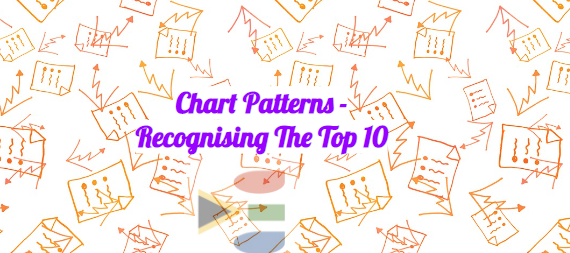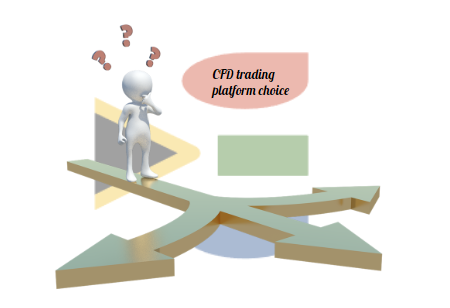There are lot of traders wondering how useful technical analysis chart patterns in CFD trading? So we are going to answer just that, along with giving you 10 chart patterns to pay attention to.
Many traders believe that chart patterns can provide valuable insights into market trends and potential trade opportunities. However, it is important to note that chart patterns alone are not always reliable and should be used in conjunction with other analysis tools.
The success rate of technical analysis can vary quite considerable from instrument to instrument, and likewise over varying timeframes. Regardless of this, combined with a reliable trading strategy, any edge (or alpha) that you can gain on the market through understanding the most effective chart patterns could be key to building a total trading plan.

Are chart patterns even worth it?
It is said that some of the more successful technical patterns have a success rate of upwards of 65%, which would have huge implications on performance as part of a properly managed strategy.
Other chart patterns may only perform slightly better than 50% success rate, which whilst comparable to the success rate of a coin toss, can be sufficient in a successful trading strategy if the projected moves are on average sufficiently greater than the stops you put in place on any losing trades.
Chart patterns encyclopedia – 10 to watch
1. Head and shoulders:
This chart pattern is formed by a peak, followed by a higher peak, and then a lower peak resembling a human head and shoulders. It is meant to signify that the trend will soon reverse.
2. Double top/bottom:
This pattern indicates an upcoming reversal and is formed by two consecutive peaks (for double top) or lows (for double bottom).
3. Rising/falling wedge:
A rising wedge occurs when there are higher highs and higher lows, giving the appearance of an upward sloping triangle. A falling wedge shows lower highs and lower lows, creating a downward sloping triangle shape. The breakout direction of this pattern can indicate whether the trend will continue or reverse.
4. Flag or pennant:
These chart patterns appear as small, sideways rectangles after a significant price movement. They indicate a brief pause in the current trend before it resumes in the same direction.
5. Cup and handle:
This pattern appears as a slight dip or “cup” followed by a smaller increase or “handle” before the trend continues upwards. It can signal an upcoming bullish trend.
6. Ascending/descending triangle:
This chart pattern is formed by a flat top and downward sloping bottom (ascending triangle) or an upward sloping top and flat bottom (descending triangle). A breakout from this pattern typically signals continuation of the current trend.
7. Triple top/bottom:
Like double tops and bottoms, this pattern indicates a reversal in the trend. It is formed by three consecutive peaks or lows.
8. Symmetrical triangle:
This chart pattern has converging upward and downward sloping trend lines, creating a symmetrical triangle shape. The breakout direction from this pattern can signal whether the trend will continue or reverse.
9. Bullish/bearish engulfing pattern:
A bullish engulfing pattern occurs when a small red candlestick is followed by a large green candlestick, meaning the buying pressure is stronger than the selling pressure. A bearish engulfing pattern shows a small green candlestick being followed by a large red candlestick, indicating that the selling pressure is now greater than the buying pressure. These patterns can signal a change in the current trend.
10. Hanging man/hammer:
A hanging man pattern appears at the end of an uptrend and has a small body with a long lower wick, indicating that selling pressure is increasing. A hammer pattern occurs at the end of a downtrend and has a small body with a long upper wick, showing that buying pressure is increasing. These patterns can signal a potential reversal in the current trend.
Technical trading using chart patterns in CFDs
Many of the best trading platforms today continue to offer a range of technical indicators built in for free as standard, but the recognition of chart patterns is something that will still fall on you as a trader. Many of the chart patterns could have slightly different interpretations based on how you draw the lines on your charts, and over differing timeframes, so you can verify trades by cross checking short term trades using both the 3 and the 5 minute chart for example.
Using charts, and technical analysis on trading apps can be a little more difficult due to the size of the screen, and the different ways of interacting with the platform, but by and large you can identify trends, potentially without being able to be quite as detailed in your verification.
It is important to keep in mind that chart patterns can also fail, or be invalidated, if certain criteria are not met; such as volume confirmation or a clear breakout/breakdown from the pattern formation. As with any form of analysis, it is crucial for you to conduct your own research, and use secondary technical tools to support, or deny, a TA signals’ validity.
Technical analysis, and particularly the simplicity of chart patterns can be a valuable tool for CFD traders, but it should not be the sole basis for trading decisions. It is important to always perform fundamental analysis and consider macroeconomic factors as well.
Combining technical and fundamental analysis with a sound risk management strategy can help you reach your overall trading goals more efficiently than either of these models on their own, so build out a strong knowledge of both!










